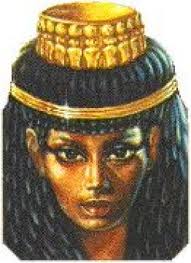Taken from: http://www.cojs.org/pdf/house_of_david.pdf
Editor, H. S. (2002;2002). BAR 20:03 (May/June 1994). Biblical Archaeology Society.
“House of David” Restored in Moabite Inscription
A new restoration of a famous inscription reveals another mention of the “House of David” in the ninth century B.C.E.
By André Lemaire
....
That is what I propose for one of the most difficult lines in the text, line 31. This line is badly broken; part of it is still on the stone and part has been reconstructed from the squeeze.
That is what I propose for one of the most difficult lines in the text, line 31. This line is badly broken; part of it is still on the stone and part has been reconstructed from the squeeze.
After a careful study of the squeeze, Clermont-Ganneau proposed the following uncertain reading at the end of the line:
b[--]wd ( ב -- דו ). † This tentative reading was confirmed by a German scholar, Mark Lidzbarski, who tentatively identified traces after b as part of a t ( ת ). † After checking the original and the squeeze in the Louvre, still another scholar, R. Dussaud, † proposed to read bt[-]wd .
My own examination of the stone and the squeeze, which is now being restored and cleaned of accumulated dust, confirms that t follows the b . I would now, for the first time, reconstruct the missing letter as a d ( .( ד
The result:
bt[d]wd ( תב [ ד ] דו ), the “House of [D]avid!”
The attentive reader will immediately notice that “House” is spelled
bt , rather than byt , as in the Tel Dan inscription. But this is in fact no problem. In Moabite (the language of this inscription) it was apparently spelled both ways at this time. Indeed, in this very inscription it is spelled bt five times (in lines 7, 23, 27 and 30 [twice]) and only once (in line 25) byt . The y may have been an archaic spelling or an optional consonant-used-as-a-vowel in an essentially consonantal script; this is what scholars call plene orthography (spelling) as opposed to defective orthography. Rudimentary vowels like these ( w and h are other examples) are referred to as matres lectionis , the mothers of reading.
....
The term
bt[d]wd is the subject of the sentence that begins earlier in line 31. Unlike English, the subject is not necessarily at the beginning. The sentence begins, “And as for Horonen [a place], dwelt there … ” Then comes the subject. That what follows identifies who lives in Horonen is clear from parallel passages elsewhere in the inscription involving Israel, the northern kingdom, rather than Judah, the southern kingdom that was ruled by the House of David. For example, in lines 7–8, we read, “Omri [previously identified in lines 4–5 as the king of Israel] had taken possession of the land of Medeba, and he dwelt there … ” It is clear that bt[-]wd is probably a designation for a king. It appears that the only possible restoration is bt[d]wd , the “House of David,” just as the “king of Israel” ( mlk ysr’l ) is mentioned three times earlier. Moreover, referring to the king of Judah by reference to the “House” of David has several parallels in the Bible ( 2 Samuel 7:26 ; 1 Kings 2:24 , etc.).
This new reading not only establishes another appearance of the House of David in an ancient Semitic inscription, it also helps us to understand better the historical context of the Mesha stela.
....





